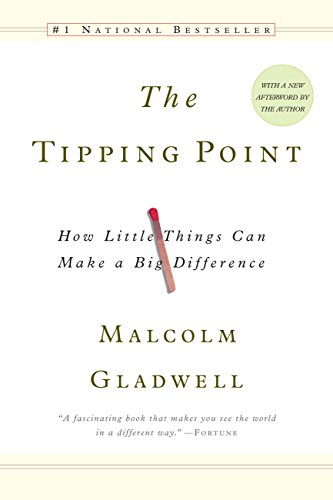

This article is an excerpt from the Shortform summary of "The Tipping Point" by Malcolm Gladwell. Shortform has the world's best summaries of books you should be reading.
Like this article? Sign up for a free trial here .
What is a tipping point? What does “tipping point” mean? How are tipping points related to epidemics? How can you use the theory of tipping points to spread your ideas?
A tipping point is a critical moment when a minor change makes all the difference. This is the point at which a movement reaches a boiling point or critical mass and explodes.
We’ll cover the meaning of “tipping point” in Malcolm Gladwell’s book The Tipping Point and explore examples that answer the question, What is a tipping point?
What Is a Tipping Point?
To answer the question, What is a tipping point?, let’s look at an example.
You see the phenomenon every flu season: Someone in your office catches a bug, and within a week it seems half her department is infected. In two weeks, there are people showing those same flu symptoms in every department, and by the end of the month, half the office has caught the bug.
Each person who catches the virus can infect a whole new set of people, and each of them does the same, in an ongoing ripple effect. The virus continues spreading this way, ultimately creating an epidemic. This is how epidemics grow through geometric progression: When a virus spreads, it doubles, and doubles again, and doubles again, and through that process it grows exponentially.
Epidemics don’t build gradually and steadily; they grow and reach a boiling point or critical mass, at which point they explode and turn into an epidemic. That threshold is called the tipping point. What does “tipping point” mean? It’s the threshold at which small changes add up.
It can be hard to wrap our head around the notion that drastic change happens at one particular point because we tend to think that significant changes occur in a steady progression (e.g. a river doesn’t flood instantaneously when a storm hits; the water steadily rises over hours of heavy rain). But then there’s the tipping point–a critical moment when minor change makes all the difference (e.g. the moment the water crests the river bank).
To answer the question, What is a tipping point?, think of snow: The difference between 34 and 31 degrees Fahrenheit doesn’t feel much colder than the difference between 37 and 34 degrees. But when that same three-degree drop happens at the tipping point — 32 degrees — rain becomes snow.
There are three factors that can be adjusted to turn an idea into a social epidemic: the messenger, the message itself, or the context of the message. These three factors help a movement reach a tipping point.
- The Law of the Few: Certain types of people are especially effective at spreading an infectious idea, product, or behavior.
- The Stickiness Factor: You can change the presentation of a message to make it more contagious and stickier (having a more lasting impact).
- The Power of Context: The environment in which the message or idea is delivered can have a huge impact on whether enough people adopt and spread it to create an epidemic.
Employing one, two, or all three of these principles can tip an epidemic.
Tipping Point Example: The Resurgence of Hush Puppies
Looking at another example can help us answer, What is a tipping point?
You don’t necessarily need all three principles to tip an epidemic — you just need the right ones. The Law of the Few and the Power of Context were both pivotal in launching a sneaker brand called Hush Puppies from the brink of decline to epidemic popularity within the span of a few years.
In the early 1990s, Hush Puppies were selling only about 30,000 pairs a year. Around that time, teens in New York City’s SoHo and the East Village began wearing the sneaker specifically because they were not in style. Fashion Mavens likely contributed to the spread of Hush Puppies in these neighborhoods, noticing the ironically un-trendy trend and alerting friends.
Two fashion designers then noticed the budding trend among those New York City teens, and were inspired to use Hush Puppies to complement their couture. The well-known designers acted as Connectors, broadcasting images of the shoes to a massive audience and tipping the epidemic. What’s more, the fact that they noticed the trend in SoHo and the East Village — two neighborhoods known as centers of cutting-edge, fashion-forward, and experimental styles — illustrates the Power of Context; the effect likely would have been different if the story started with a bunch of Kansas City teenagers wearing the sneaker.
Soon celebrities were wearing the sneaker and Hush Puppies became a mainstream trend. What is the tipping point? Celebrities and other fashion influencers were Salesmen to the public masses who, just a few years earlier, probably wouldn’t have considered buying un-stylish Hush Puppies. With this potent mix of Mavens, Connectors, and Salesmen, the company sold 430,000 pairs in 1995. Sales quadrupled in 1996, and increased again the following year.
———End of Preview———

Like what you just read? Read the rest of the world's best summary of "The Tipping Point" at Shortform . Learn the book's critical concepts in 20 minutes or less .
Here's what you'll find in our full Tipping Point summary :
- What makes some movements tip into social epidemics
- The 3 key types of people you need on your side
- How to cause tipping points in business and life






